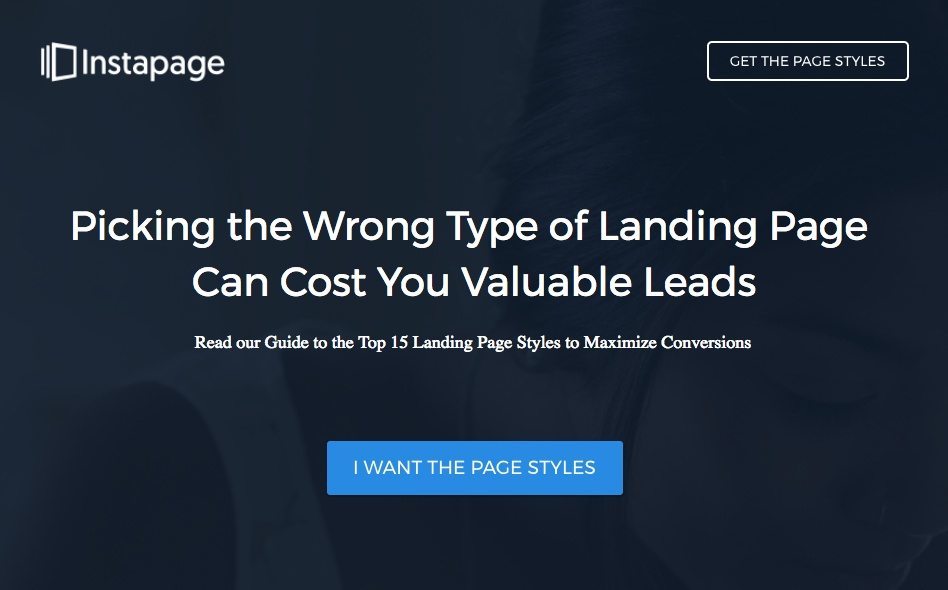I remember watching Mad Men for the first time and feeling excited to see the growth of the advertising industry.
Season by season, main characters were discovering the basics of modern marketing, like the importance of long-lasting client relationships, market research, and measuring the success. I also remember the moment when Don Draper realized that an effective campaign begins by pulling on people’s heartstrings.
Since the 1960s much has changed. What hasn’t changed is: people use their emotions as much as their reasoning when buying, it’s still well-known and valid. We even know how particular emotions influence buyers! According to Geoffrey James, the sales expert, all buying decisions are driven by greed, fear, altruism, envy, pride, and shame. And for post-click landing pages, there are some simply psychological hacks you can apply to increase your conversion rate.
Emotional appeal in advertising is certainly a real thing, and there are plenty of emotional advertising examples to draw inspiration from (see Proctor and Gamble’s “Thank You Mom” Olympics commercial). But in today’s post, I’m going to show how to use the following six emotions on your post-click landing page to encourage people to buy from you.
How to use emotional triggers on your post-click landing pages
1. Greed: If I make a decision now, I will be rewarded
Greed is a common (and quite simple) emotion that makes us feel that we gain something from the purchase. All “2 for 1” sales show that most of us have a desire to get as much as possible in the shortest amount of time — and there’s nothing wrong with it.
How you can use greed on your post-click landing page
Run a promotion to attract new customers and returning ones. Clearly inform that this is just a one-time offer, limited offer, or one that will expire soon. Embed a countdown timer on your post-click landing page to strengthen the effect and use urgent copy (e.g. “don’t miss out!”, “limited time only!” or “only 3 hours left!”).
A good practice for urgent CTAs is writing in first-person; “start my free 30-day trial” is much more convincing than “start a free trial.” Here’s an example of a page that uses a countdown timer and first-person copy:

2. Fear: If I don’t make a decision now, I’ll regret it
While it’s not good to scare or intimidate your prospects, fear can be a good and useful emotion. Fear often points to the areas that we need to investigate more carefully, warns of danger and, in the end, helps us grow. Fear makes us worry that we will miss or lose something if we don’t act.
How you can use fear on your post-click landing page
If you’ve done your market research properly, you know who your target audience is and you know their pains. Your customer might be an entrepreneur who’s afraid of going out of business, but it also can be a sales manager who’s afraid of not reaching his monthly quota.
On your post-click landing page, remind them about this fear in a subtle way and offer your solution. When they feel the pain or are reminded about it, they will be more likely to act and convert (see Instapage post-click landing page below). Be careful not to overdo it though as you might scare your customers off.

3. Altruism: If I make a decision now, I will help others
Altruism, my personal favorite of buying emotions, makes people buy to help others with this decision. It can work particularly well for companies selling “green” products or donating money to a greater cause.
How you can use altruism on your post-click landing page
In this particular case, your post-click landing page should answer one question: how is your company going to help save the world once your customer buys from you (or donates)? How are you going to use their money to help people or the environment?
Explain the cause you stand for, be transparent about the ways you’re going to make a donation, and show the results of your action.
This type of emotion works best for non-profit companies or brands focusing on cause marketing. Look how Futures Without Violence persuades people to act with a donation post-click landing page:

4. Envy: If I don’t make a decision now, my competition will win
Envy says to a customer: you need to act to stay competitive. Who is or what is our customer’s competition?
If you’re selling to businesses, their competition is other companies from their industry. It gets more complicated when you’re selling to single customers. Their “competition” might be their colleagues, classmates or contestants; well-done market research should make it clear to you.
How you can use envy on your post-click landing page
Appeal to competitive nature of your visitors by showing them how they can benefit from your product or service. Giving them a list of advantages and paint a picture of success once they buy your product. Tableau does this very well with their white paper post-click landing page:

Don’t make anything up, because sooner or later, your customers will share their opinions with the world and you might lose your credibility.
5. Pride: If I make a decision now, I will look smart
This type of emotion is dedicated to all buyers who want to look smart having made a good choice. They not only want others to know what a great purchase they made, but they also want to feel that they made the best possible decision.
How you can use pride on your post-click landing page
This type of emotion is very complex and varies depending on a person, that’s why market research is essential. People can be proud of buying local food, making the best money-value purchase, or buying a bestselling book.
You need to find out what your customers desire and give it to them, supporting it with solid arguments.
Take Lyft as an example. Their post-click landing page below speaks to their target audience’s desire to earn a good wage without having to purchase additional resources. Once users sign up, they’ll be proud working for themselves on their own schedule:

6. Shame: If I don’t take action now, it will be a bad decision
Shame is a bigger brother of guilt, and it can be very difficult to use. You have to be careful not to turn the emotion that makes people buy your product into a negative feeling that they might connect with your brand in the future.
How you can use shame on your post-click landing page
In my experience, there are two ways to use shame on a post-click landing page.
The first case is to show your customer how fantastic your product is, how many benefits it may bring, and how it can change their life for the better. In this case, you’re giving customers many reasons to buy your product that they start to feel ashamed they didn’t discover it before.
The second case works great for cause-related companies like World Wildlife Fund or Greenpeace. By showing a tragic situation in the world and how it could be worse (or better, depending on the visitor’s actions), these organizations invoke shame and ultimately persuade visitors to donate:

Although, there is a worst case scenario when the visitor may feel ashamed and guilty, and simply leaves your post-click landing page to avoid any unpleasant emotions. For this reason, I always recommend combining shame with hope, to make it clear to visitors that their actions will make a positive difference.
Use emotional advertising triggers to your advantage
Emotions are a significant part of the buying process. There’s even a popular expression: “people make emotional buying decisions, then use logic to justify them.”
Remember though, the path to a customer’s heart (or to purchase, if you like), must be both emotional and rational. The best post-click landing pages should contain facts, information about the product or service, and proof that the product is worth purchasing.
By using the six basic emotions above on your post-click landing pages, you’ll be able to emotionally connect with your prospect and increase the chance of conversion and/or purchase.
Now that you know how to combine the emotions above, you can do just that.
Sign up for an Instapage Enterprise demo today.
About the author
Justyna Polaczyk is a Content Writer and the author of Business Sidekick podcast. She used to work as a business analyst and a journalist. Now, she writes about business psychology and eCommerce.

See the Instapage Enterprise Plan in Action.
Demo includes AdMap™, Personalization, AMP,
Global Blocks, heatmaps & more.
